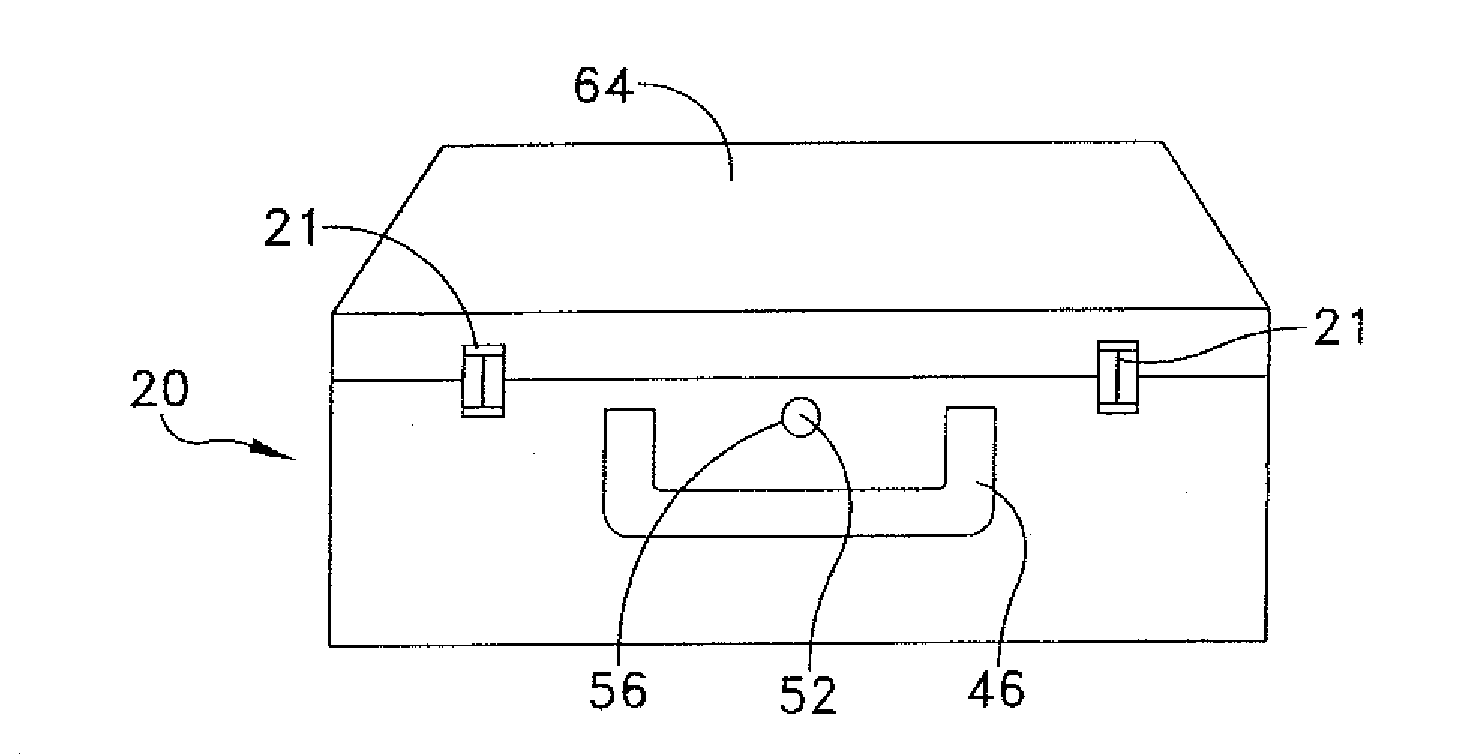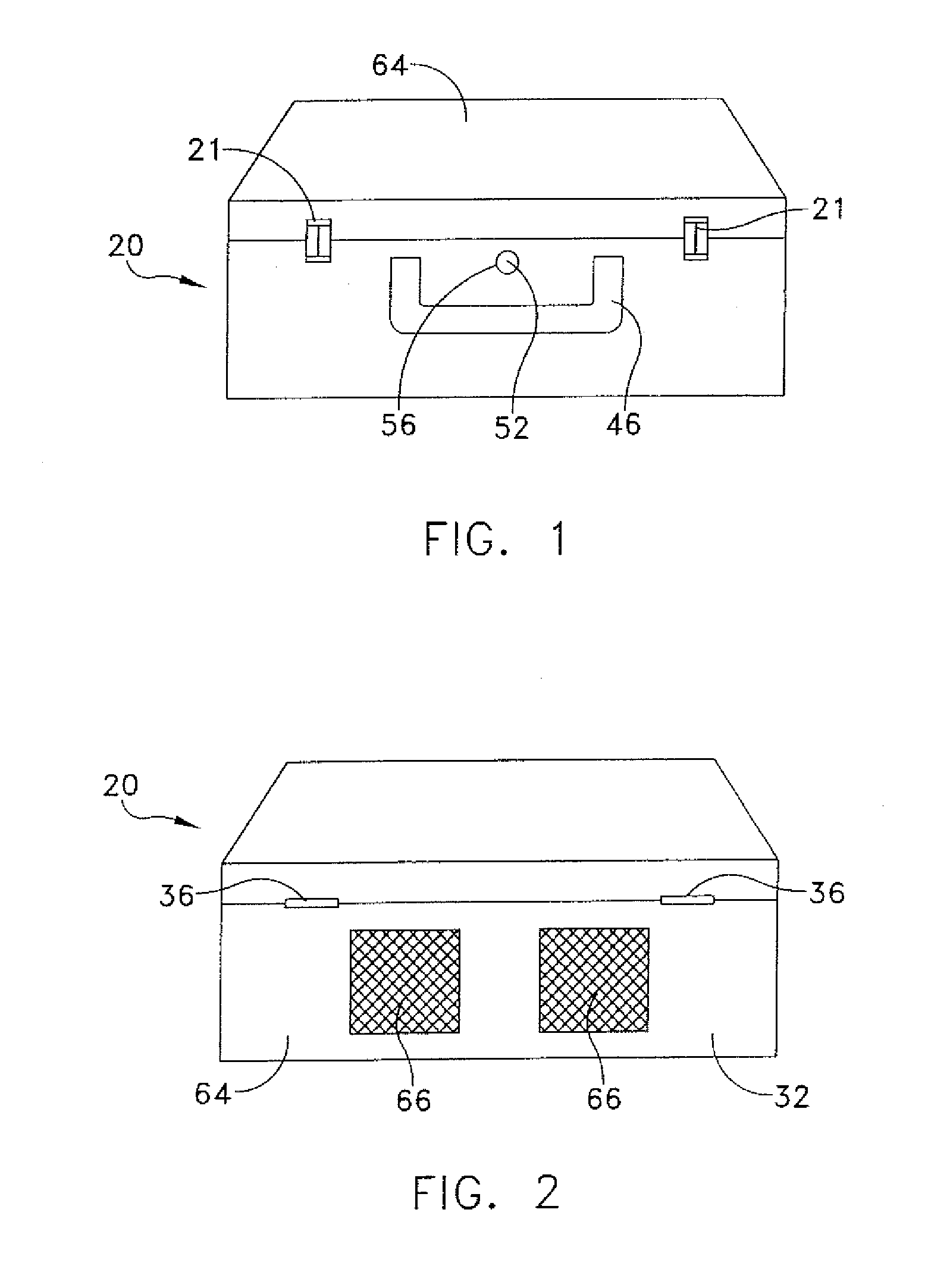Portable Chemical Sterilizer
a chemical sterilizer and portability technology, applied in the direction of detergent compounding agents, instruments, fluid pressure control, etc., can solve the problems of consuming significant amounts of water and power per sterilization cycle, electrical autoclaves are in fact difficult to transport in vehicles, and far-forward army surgical teams have no existing technology for conveniently sterilizing surgical instruments on-site, etc., to reduce the production of chlorinated organic by-products, reduce the shelf life of fresh, and protect the environment
- Summary
- Abstract
- Description
- Claims
- Application Information
AI Technical Summary
Benefits of technology
Problems solved by technology
Method used
Image
Examples
Embodiment Construction
[0037]The present invention is directed toward a lightweight, portable apparatus in the form of a convenient carry-case or handled vessel or box for carrying out chemical reactions that convert chemical energy to forms usable for the sterilization of microbiological contaminants without the use of external sources of power. Within the apparatus, sterilization is achieved in situ by chemically generating conditions involving a lethal sterilant, heat, and humidity, such that exposure of the contaminated objects to this environment sterilizes objects contaminated with harmful pathogens or infectious microorganisms.
[0038]The preferred use of the portable sterilizers includes using a chemical combination that ensures the complete destruction of contaminating microorganisms in an optimal time. Therefore, there follows below a detailed description of the chemical combination, followed by descriptions of the embodiments of the apparatus in which the chemical combination is activated to effe...
PUM
 Login to View More
Login to View More Abstract
Description
Claims
Application Information
 Login to View More
Login to View More - R&D
- Intellectual Property
- Life Sciences
- Materials
- Tech Scout
- Unparalleled Data Quality
- Higher Quality Content
- 60% Fewer Hallucinations
Browse by: Latest US Patents, China's latest patents, Technical Efficacy Thesaurus, Application Domain, Technology Topic, Popular Technical Reports.
© 2025 PatSnap. All rights reserved.Legal|Privacy policy|Modern Slavery Act Transparency Statement|Sitemap|About US| Contact US: help@patsnap.com



